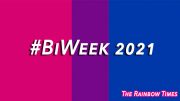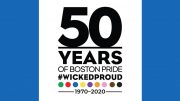Universal Pictures leads studios in 2012 LGBT-inclusive theatrical releases
LOS ANGELES, Cal. — GLAAD, the nation’s lesbian, gay, bisexual and transgender (LGBT) media advocacy organization, today released its first annual Studio Responsibility Index (SRI), a report that maps the quantity, quality and diversity of images of LGBT people in films released by the six major motion picture studios during the 2012 calendar year.
To view the full report visit http://glaad.org/sri. GLAAD also launched a letter for moviegoers to sign that asks filmmakers to be more LGBT-inclusive which lives at http://glaad.org/sri
GLAAD found that of the 101 releases from the major studios in 2012, 14 of them included characters identified as lesbian, gay, or bisexual. The vast majority of these characters were no more than cameos or minor roles. None of the films tracked contained transgender characters.
As part of the inaugural SRI, GLAAD also introduced the “Vito Russo Test,” a set of criteria analyzing how LGBT characters are represented in a fictional work. Named after GLAAD co-founder and celebrated film historian Vito Russo, and partly inspired by the “Bechdel Test,” these criteria represent a standard GLAAD would like to see a greater number of mainstream Hollywood films reach in the future. [pullquote]None of the films tracked contained transgender characters. [/pullquote]
The Vito Russo Test criteria:
- The film contains a character that is identifiably lesbian, gay, bisexual, and/or transgender (LGBT).
- That character must not be solely or predominantly defined by their sexual orientation or gender identity (i.e. the character is made up of the same sort of unique character traits commonly used to differentiate straight characters from one another).
- The LGBT character must be tied into the plot in such a way that their removal would have a significant effect. Meaning they are not there to simply provide colorful commentary, paint urban authenticity, or (perhaps most commonly) set up a punchline; the character should matter.
Less than half (six) of the 14 major studio films that featured an LGB character managed to pass the Vito Russo Test.
GLAAD also releases the annual Network Responsibility Index (NRI), which analyzes the quantity and quality of LGBT characters on primetime television. Following release of the report, GLAAD meets with networks to advocate for increased LGBT inclusion in their programming. Based on results of SRI, GLAAD plans to meet with film studios in a similar manner.
“As a major influence in American culture and one of our nation’s largest media exports abroad, the lack of LGBT characters in big-budget films needs to change,” said GLAAD’s Wilson Cruz. “Until LGBT characters are depicted in these films in a substantial way with more regularity, there will remain the appearance of LGBT bias on the studios’ part. Whether it’s an action hero or a supporting character, moviegoers should be able to see LGBT people as integral players in the stories told by leading Hollywood studios.” [pullquote]“As a major influence in American culture and one of our nation’s largest media exports abroad, the lack of LGBT characters in big-budget films needs to change,” said GLAAD’s Wilson Cruz.[/pullquote]
General observations:
- Out of the 101 releases from the major studios in 2012, 14 of them contained characters identified as lesbian, gay, or bisexual. Not one of the releases contained a transgender character.
- More than half of those inclusive films (55.6%) featured gay male characters, while another 33% featured lesbian characters and 11% contained bisexual characters. Male characters represented 63% of LGBT images on screen, while female characters made up just 37%
- Of the 31 different characters counted (some of whom were onscreen for no more than a few seconds), 26 were white (83.9%), 4 were Black/African American (12.9%) and 1 was Latino (3.2%). There were no Asian-Pacific Islander or recognizably multi-racial LGBT characters counted.
- The most common place to find LGBT characters in the major studios’ 2012 releases was in comedies, where nine of the 24 comedies released (37.5%) were inclusive. By comparison, 34 genre films (action, sci-fi, fantasy, etc.) made up the majority of the 2012 releases, though only three (8.8%) of those included any LGBT characters. Additionally, only one of 21 dramas (4.7%) and one of four documentaries (25%) were inclusive, while there were no LGBT characters in any animated or family-oriented films from the ‘Big Six.’
GLAAD recommendations to studios:
- Genre films like comic-book adaptations and action franchises are where major studios seem to commit the majority of their capital and promotional efforts, but they remain very reluctant to include LGBT characters in them. Among the three inclusive genre films counted by GLAAD, one (Cloud Atlas) was initially created outside the studio system and another (The Avengers) included an appearance by an out gay news anchor, Thomas Roberts, that was so brief it was likely missed by many viewers.
- LGBT characters need to not only appear with greater regularity in a range of film genres, but also in more substantial roles. The question of whether a major studio would ever depict a protagonist of an action franchise as anything other than straight remains.
- In the absence of substantial roles for LGBT characters, filmmakers should at the very least include them in the world their film is depicting. When LGBT people or couples are made part of a larger ensemble or even featured in brief, casual manner, at the very least it reminds the audience that LGBT people are a part of the same society and present a more accurate portrait of that society.
- As it does in many other areas of narrative-based entertainment, diversity continues to be an area in which the entertainment industry needs to improve. Not only should there be more LGBT people depicted on screen, but those depictions should not be uniform in race, gender, socio-economic background, religion, or even age.
- Transgender characters are rare, even in independent cinema, much less major Hollywood productions. Not only does the lack of transgender representations reinforce the marginalization of the transgender community, it must also be seen as a missed opportunity by studios and screenwriters to tell fresh stories and better flesh out the worlds they create. GLAAD has advocated for and observed a noticeable increase in media coverage of the transgender community in recent years, demonstrating that the public interest is there.
“Entertainment media consumers are seeing diversity depicted on the small screen and LGBT-inclusive TV shows have consistently been among the most popular shows with audiences and critics,” said Cruz. “By being more inclusive, the Big Six studios can attract an audience that expects to see a diverse cast of characters.”
GLAAD’s 7th annual Network Responsibility Index (NRI) will be issued in the coming weeks. This report will analyze the LGBT inclusive images presented by the five broadcast networks and 10 cable networks during the 2012-2013 broadcast season. The next edition of the Studio Responsibility Index will be released in 2014.
Act now! Tell Hollywood you want more LGBT characters. Make your voice be heard.








